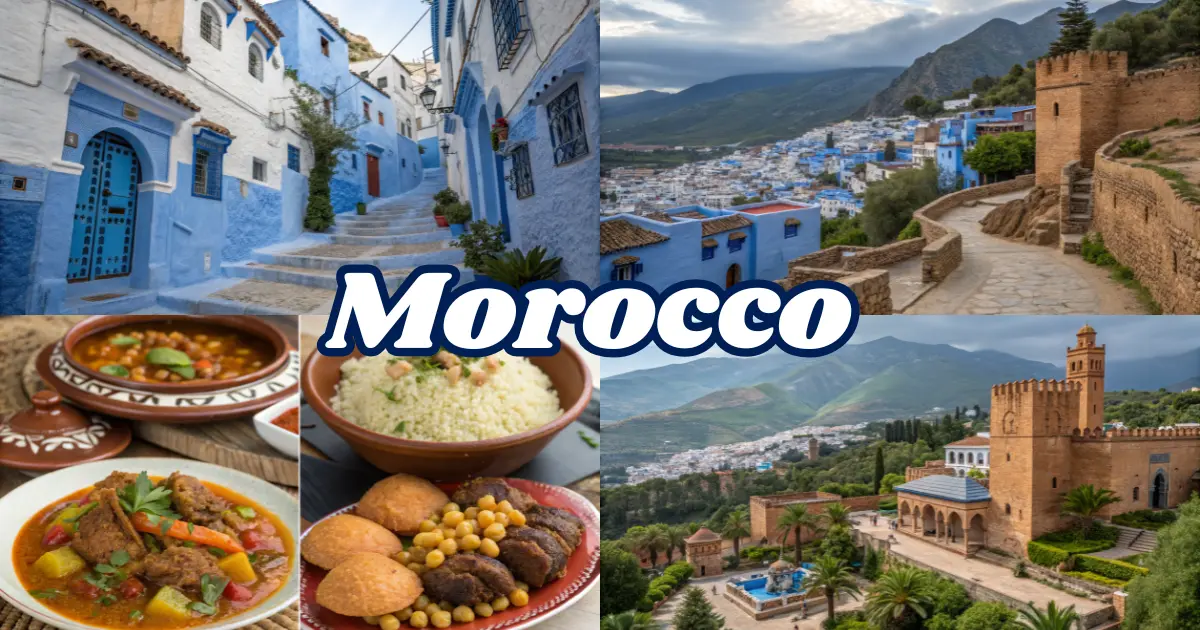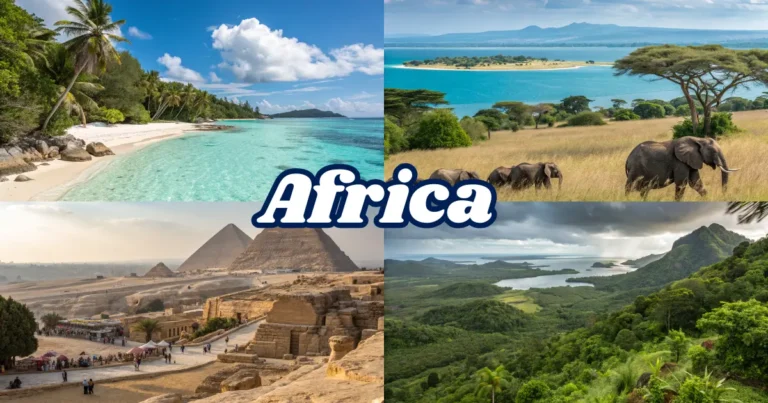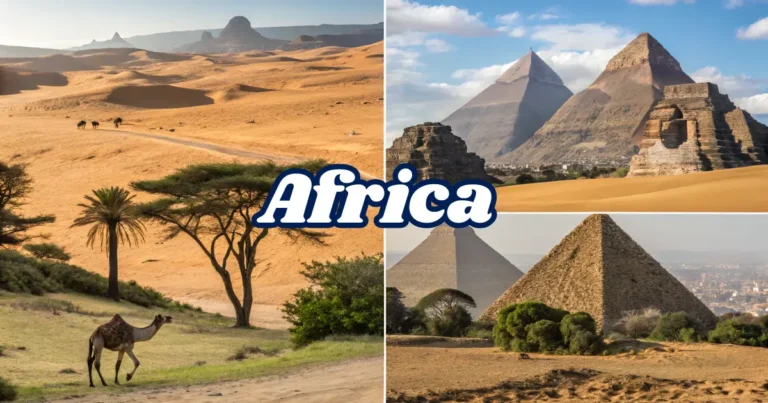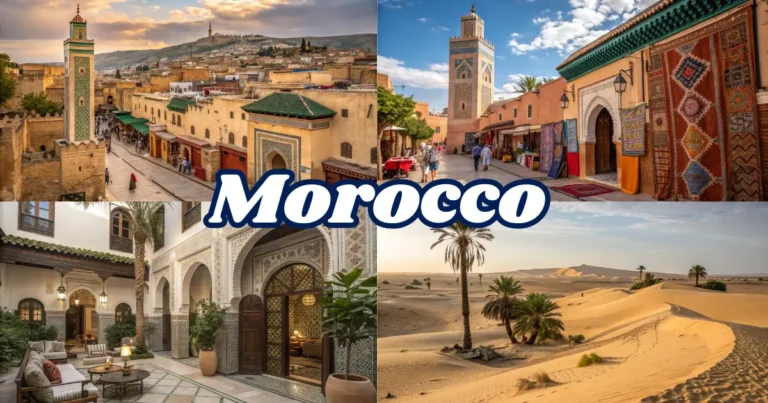History and Culture of the “Blue City Morocco”: Chefchaouen
Table of Contents
Blue city morocco
Chefchaouen is a town in the Rif Mountains of Morocco. It’s known as the “Blue City.” This place is full of history and culture.
Walking through its narrow streets, you’ll see vibrant blue buildings everywhere. This creates a magical feel. The town’s history, going back to the 15th century, is seen in its buildings, food, and traditions.
Key Takeaways
- Discover the rich history and cultural heritage of Chefchaouen.
- Explore the town’s unique architecture and traditions.
- Learn about the significance of the blue-painted buildings.
- Experience the local cuisine and hospitality.
- Uncover the secrets of this enchanting Morocco town.
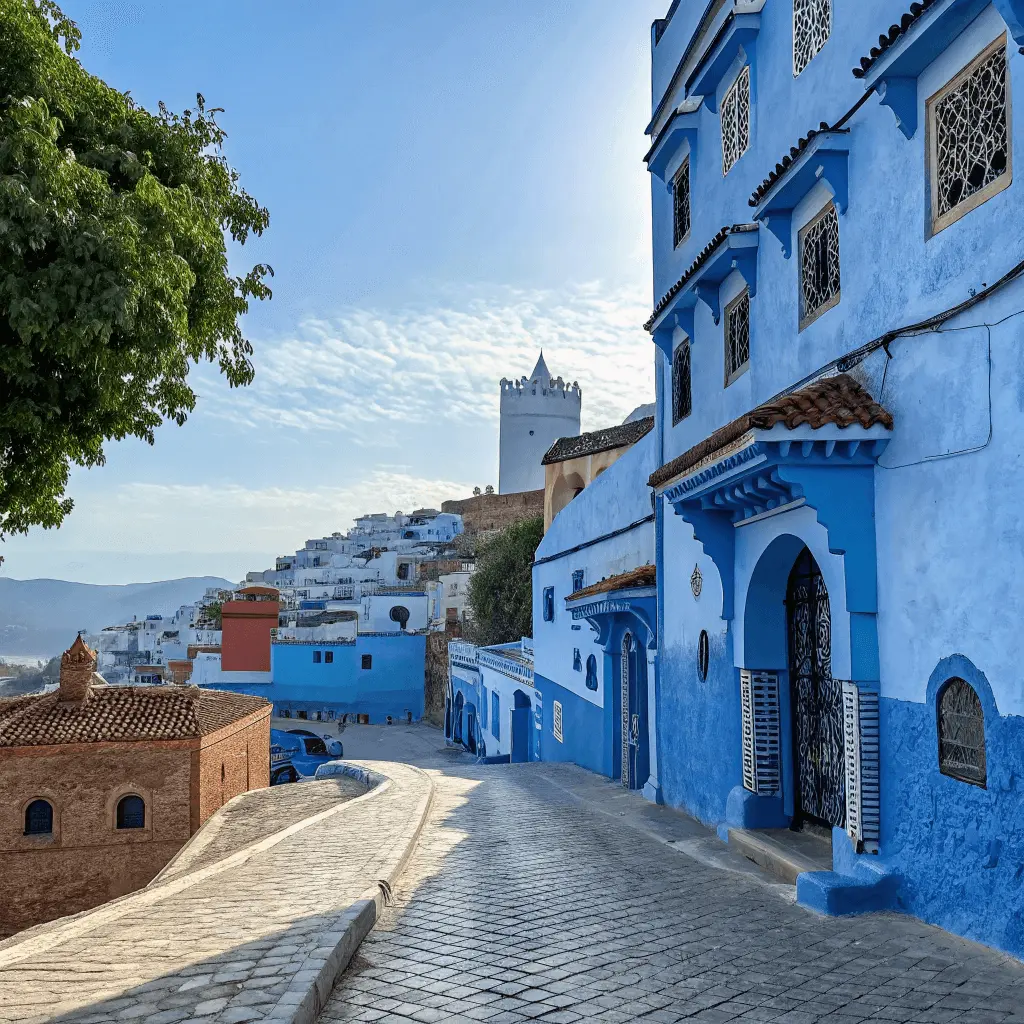
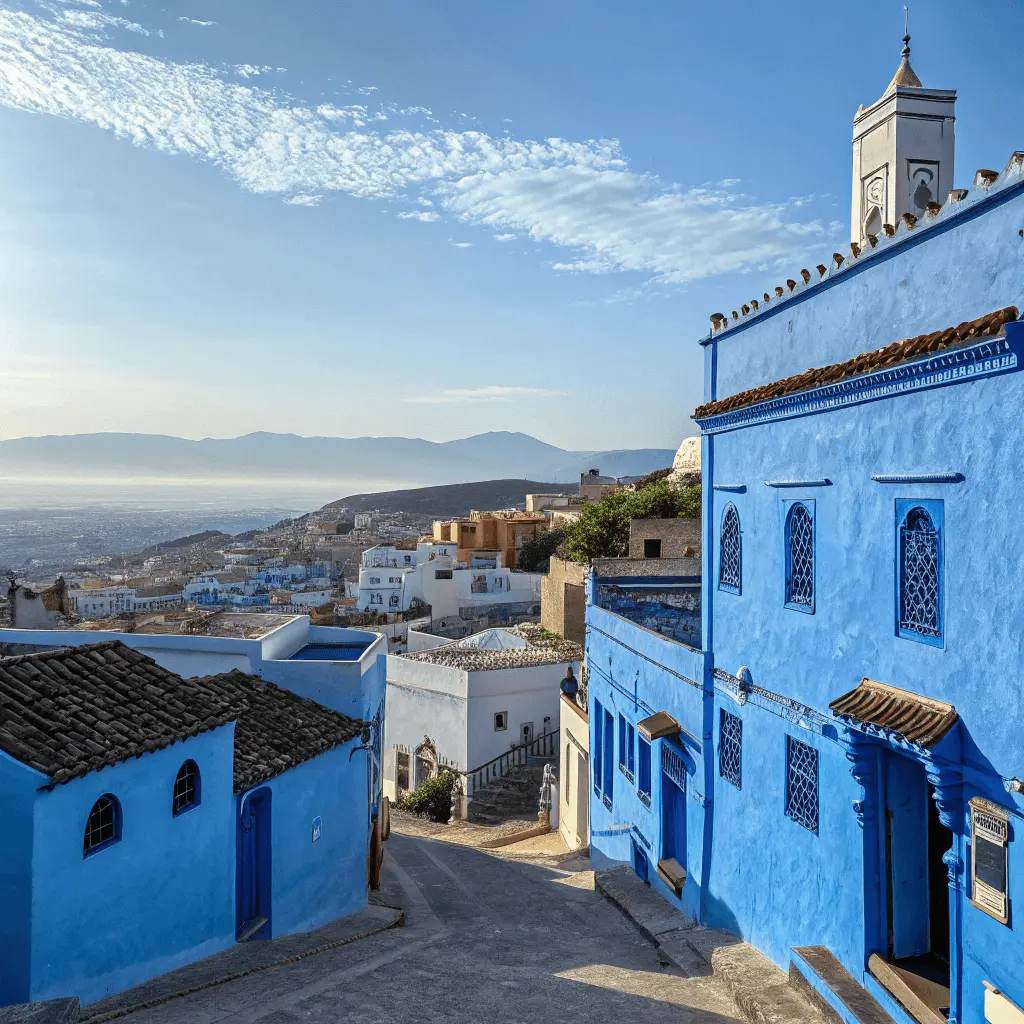

Discovering Chefchaouen: Morocco’s Enchanting Blue City
When you enter Chefchaouen, you’re surrounded by blue and warmth. This town, in the Rif Mountains, is full of culture and beauty.
The Mystique of the Azure Medina
The medina of Chefchaouen is a blue wonderland. Its blue walls glow with a magical light as you walk through. It’s a place that touches your heart.
Why Chefchaouen Should Be on Your Travel List
Chefchaouen is a special place in Morocco. It’s a mix of culture, history, and nature. It’s perfect for a break from city life.
With its stunning views and lively culture, Chefchaouen leaves a mark. It’s a place of peace, beauty, and culture. Make sure to visit Chefchaouen.
The Origins and History of Chefchaouen
As you explore Chefchaouen, you step into a city with a rich history. It’s located in the Rif Mountains of Morocco. Over the years, it has been shaped by many cultures.

Foundation in 1471: A Fortress Against Portuguese Invasions
Chefchaouen was built in 1471 to fight off the Portuguese. It was a key spot to protect the area. The founders, like Ali ibn Rashid al-Alami, made it a strong military base.
The Andalusian and Jewish Influence
Andalusian and Jewish refugees came to Chefchaouen after being kicked out of Spain. They brought their traditions and skills. This mix is seen in the city’s buildings, food, and culture.
Colonial Period and Modern Development
In the colonial era, Chefchaouen felt the effects of Spanish and French rule. Today, it’s a blend of old and new. Visitors from everywhere come to see the Blue City Morocco’s unique charm and history.
Why is Chefchaouen Known as the “Blue City Morocco”?
Chefchaouen in Morocco is famous for its blue buildings. It’s called the ‘Blue City of Morocco.’ This unique look draws visitors from everywhere.
Theories Behind the Blue Walls
There are a few reasons why Chefchaouen’s buildings are blue. One story says Jewish refugees from Spain in the 15th century brought the blue tradition. They saw blue as a color of the divine.
Another idea is that blue paint keeps mosquitoes away. This could be why so many buildings are painted blue.
The Evolution of the Blue Tradition
The blue tradition in Chefchaouen has grown over time. Locals keep painting buildings blue, especially for big events or upkeep.
The blue color is a big part of Chefchaouen’s identity. It brings the community together. Visitors love the calm feel of the blue walls, making the town even more magical.
| Theory | Description |
| Jewish Influence | Blue symbolizes the divine and was brought by Jewish refugees. |
| Practical Purpose | Blue paint may help repel mosquitoes and other insects. |
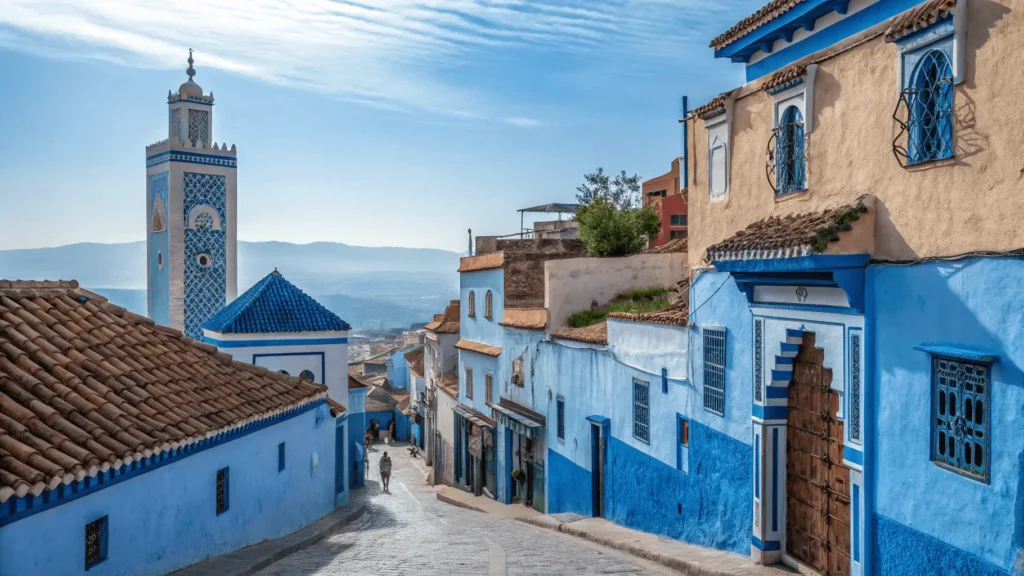
Geographic Setting and Natural Surroundings
Chefchaouen, Morocco’s “Blue City,” is in the Rif Mountains. It’s a mix of natural beauty and culture. The town’s landscapes draw visitors from everywhere.
Location in the Rif Mountains
Chefchaouen is in Morocco’s northwest, in the Rif Mountains. This area is known for its rough terrain and beautiful views. The town’s high elevation makes the climate mild and peaceful, perfect for those looking for calm.
Climate and Best Times to Visit
The climate in Chefchaouen is mild, with warm summers and cool winters. Spring (March to May) and autumn (September to November) are the best times to visit. The weather is nice, and it’s not too crowded.
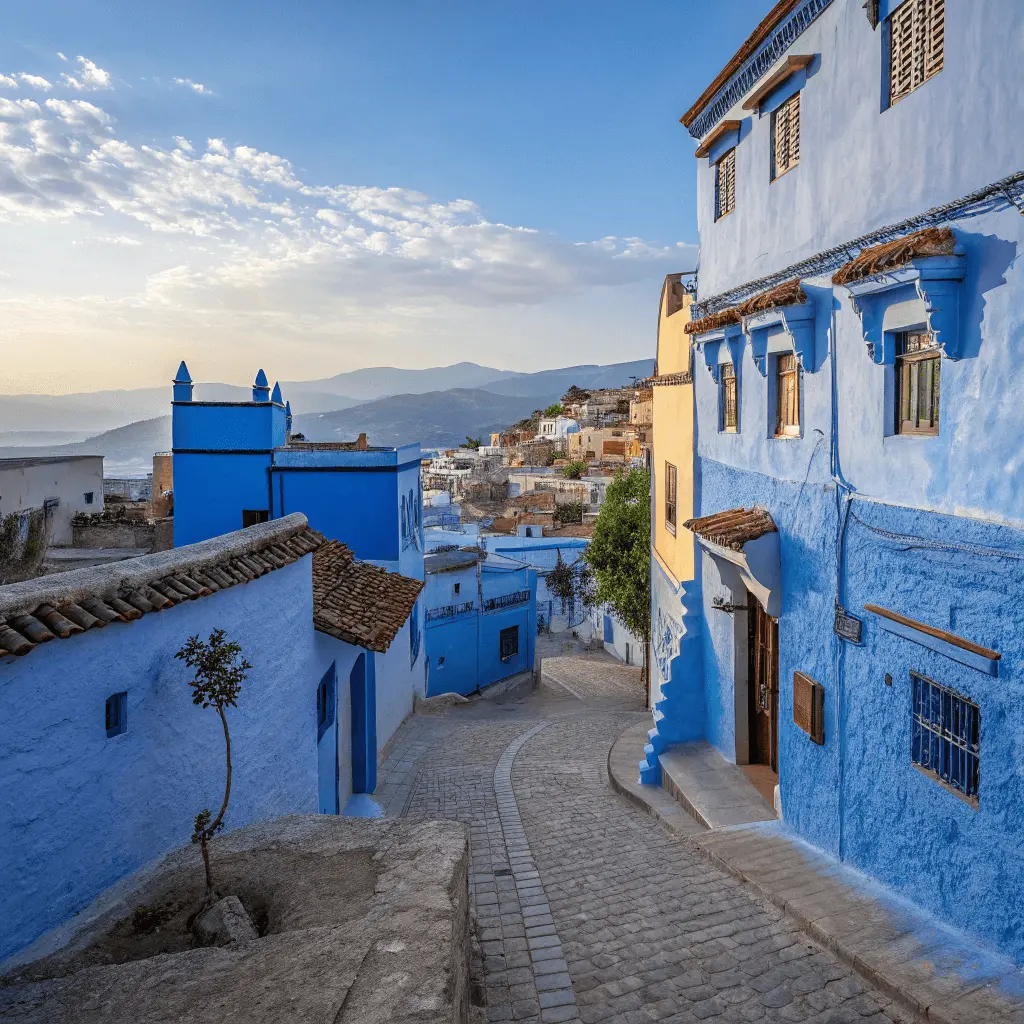
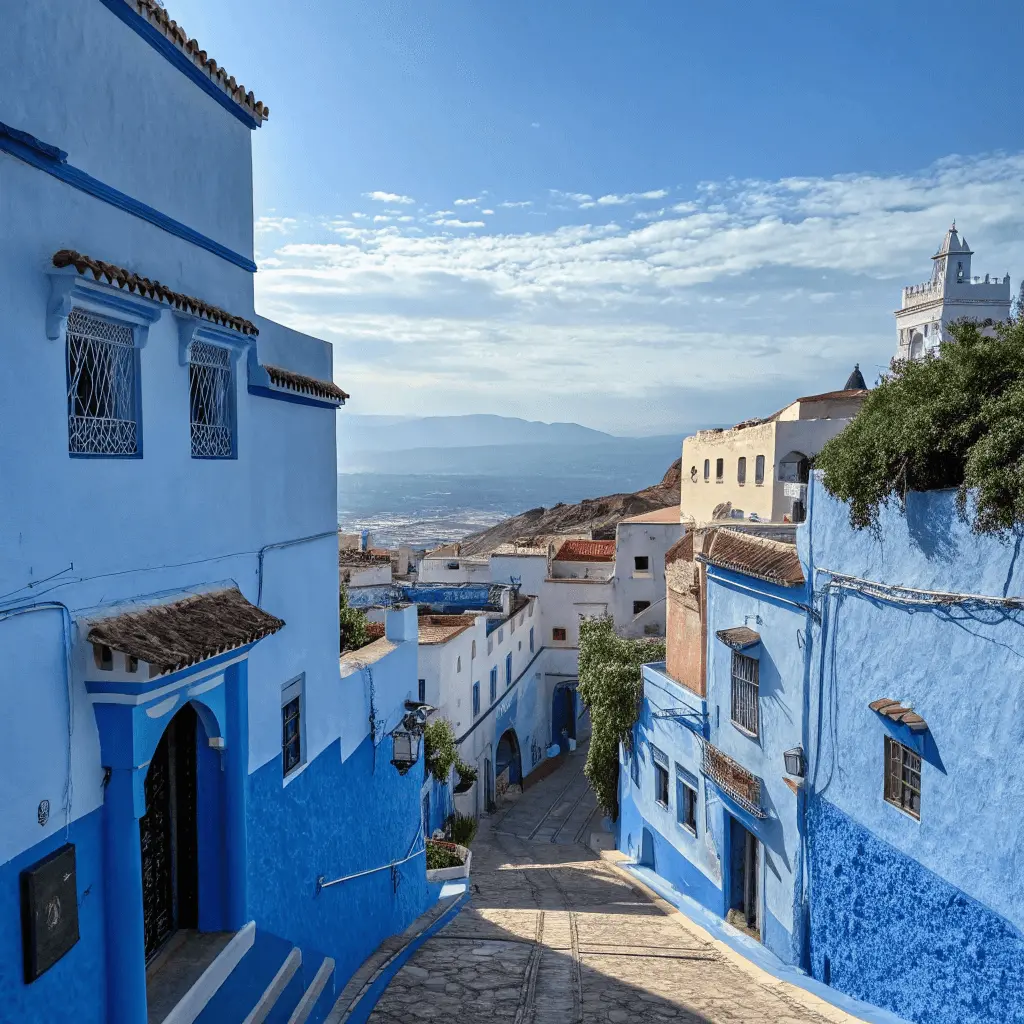
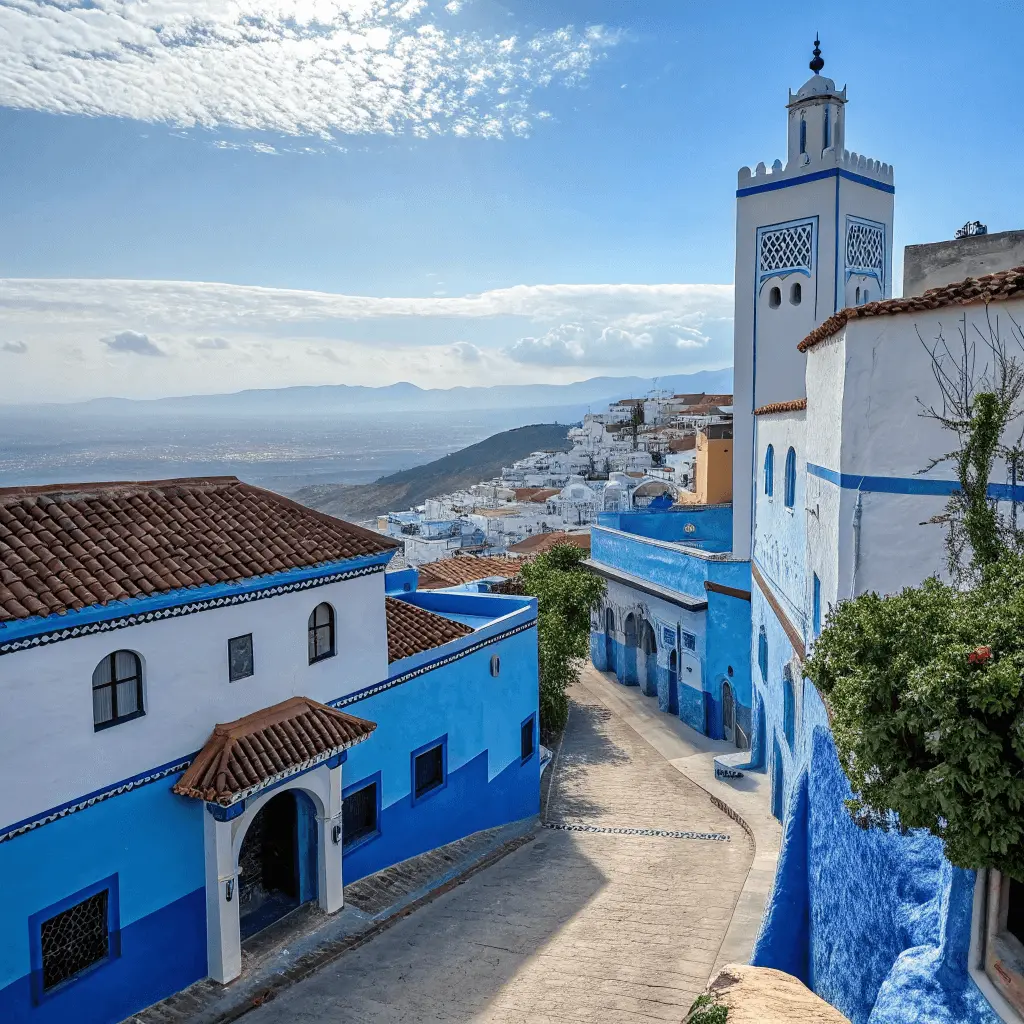
Cultural Heritage of Chefchaouen
Chefchaouen, known as the Blue City Morocco, has a unique culture. It’s influenced by history and geography. Located in the Rif Mountains, this town mixes Berber, Arab, and Andalusian cultures.
Berber, Arab, and Andalusian Influences
The culture of Chefchaouen comes from its Berber roots. Arab and Andalusian traditions also shape it. Berber culture is seen in the town’s buildings and traditions. Arab influences are in language and religion. Andalusian design is in the town’s layout and crafts.
- Berber traditions are kept alive through festivals and crafts.
- Arabic is the main language, with many speaking Tarifit, a Berber dialect.
- Andalusian design is in homes and public buildings.
Languages and Communication
In Chefchaouen, you’ll find a mix of Arabic, Tarifit, French, and English. Many in tourism speak English, helping visitors get around.
Key languages spoken in Chefchaouen:
- Arabic
- Tarifit (Berber dialect)
- French
- English (widely spoken in tourist areas)
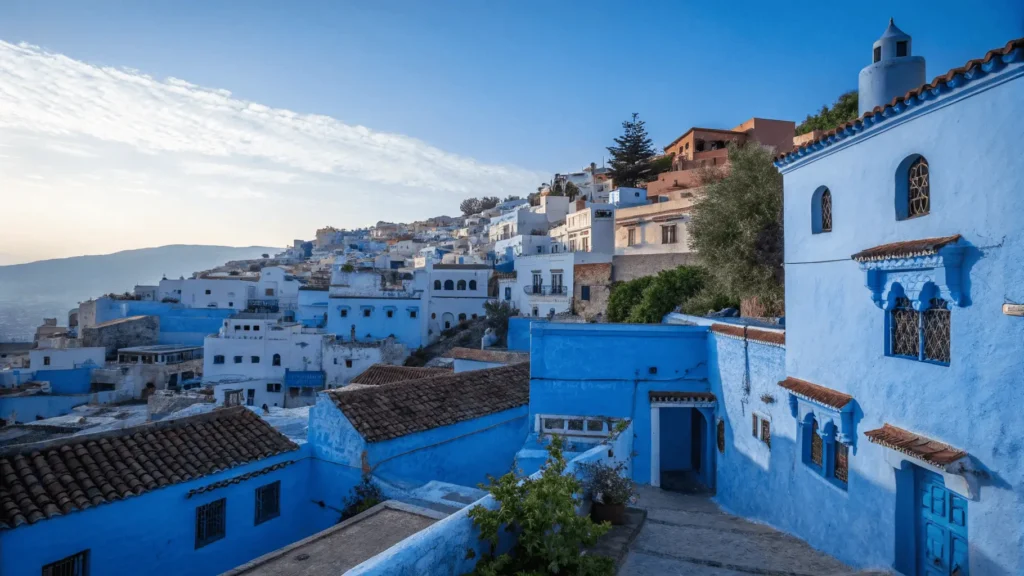
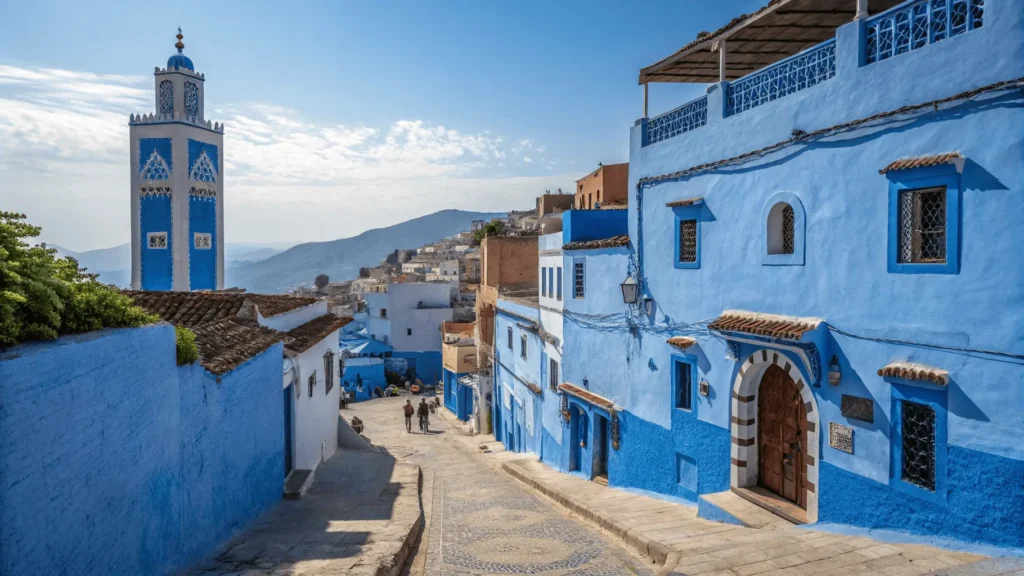
Religious Practices and Traditions
Chefchaouen is mostly Muslim. Islamic practices are big in daily life. Mosques like the Grand Mosque are important for worship and as landmarks. Visitors should respect local customs and dress modestly.
Some key religious practices include:
- Daily prayers and Friday congregations
- Observance of Ramadan and Eid celebrations
- Respect for local mosques and religious sites
Daily Life in the Blue Medina
Walking through Chefchaouen’s Blue Medina, you feel tradition and community all around. This Moroccan city is more than just its blue hues. It’s a place where culture and warmth fill every day.
Local Customs and Etiquette
Visiting Chefchaouen means respecting local ways. A simple handshake or Arabic greeting can make a big difference. Here are some customs to remember:
- Dress modestly, covering your shoulders and knees.
- Remove your shoes before entering mosques or homes.
- Greet people with a smile and a respectful hello.
Community Gatherings and Celebrations
Community events are key in Chefchaouen. The city buzzes with life during festivals. Eid al-Fitr, for instance, brings feasts, prayers, and family time. Visitors are often invited to join, giving a peek into the community’s heart.
Chefchaouen’s life is a mix of tradition, community, and joy. As the Morocco blue city, it charms everyone with its beauty and warmth.
Exploring the Architectural Wonders
Chefchaouen is known for its blue buildings, blending different cultures. As you wander through this magical city, you’ll find many architectural marvels. These wonders tell the story of its rich history.
The Kasbah and Museum
The Kasbah, built in 1471, is a key part of Chefchaouen’s past. Inside, the Kasbah Museum displays items like weapons, pottery, and traditional clothes. Visiting the Kasbah and Museum lets you see how the city has changed over time.
The Grand Mosque and Religious Buildings
The Grand Mosque is a must-see for its stunning design. Chefchaouen has many mosques and religious sites, each with its own style. These buildings are not just places of worship but also symbols of the city’s spiritual side.
Distinctive Architectural Features
One thing that makes Chefchaouen stand out is its blue buildings. This tradition started with Jewish refugees and has become a symbol of the city. The blue buildings against the mountain backdrop are truly stunning.
| Architectural Element | Description |
| Kasbah | A 15th-century fortress housing a museum with historical artifacts. |
| Grand Mosque | A significant religious building showcasing the city’s architectural style. |
| Blue Painted Buildings | Distinctive blue-hued structures that characterize Chefchaouen’s landscape. |
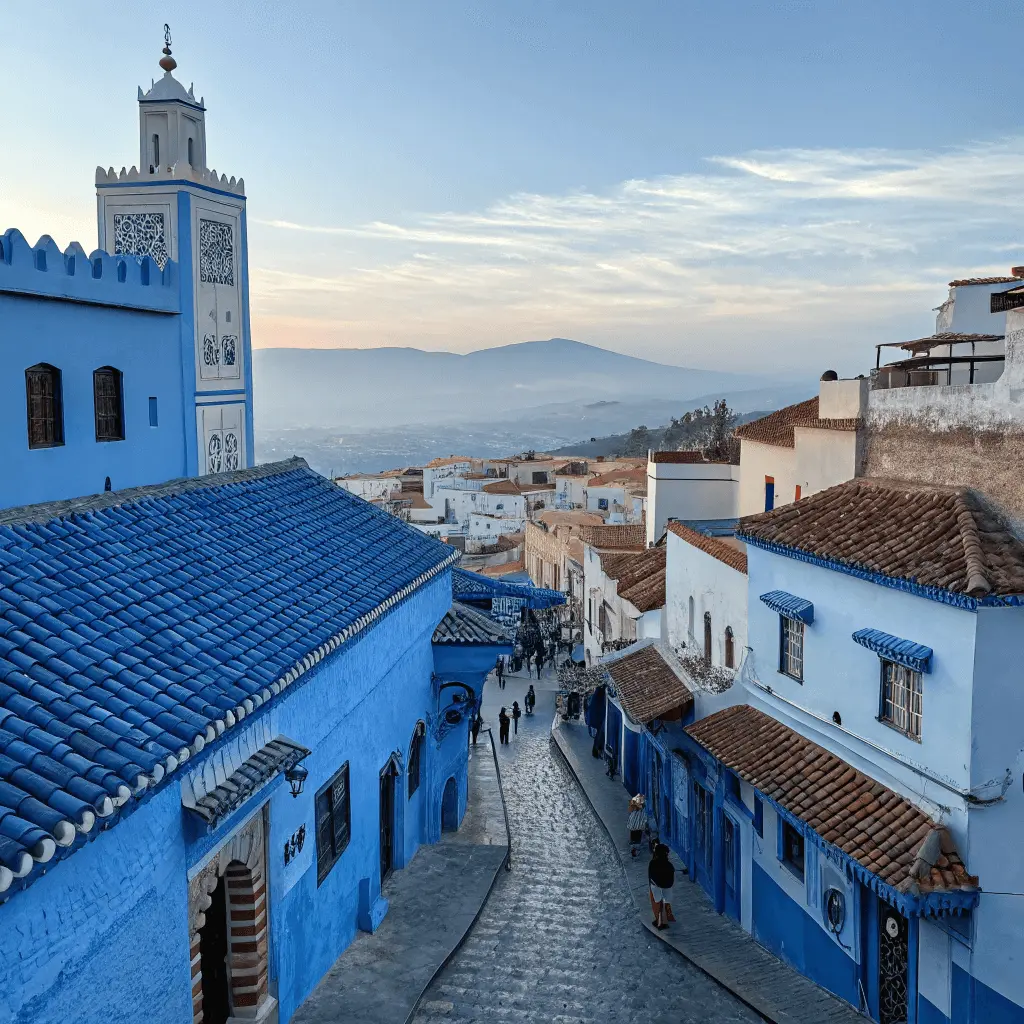
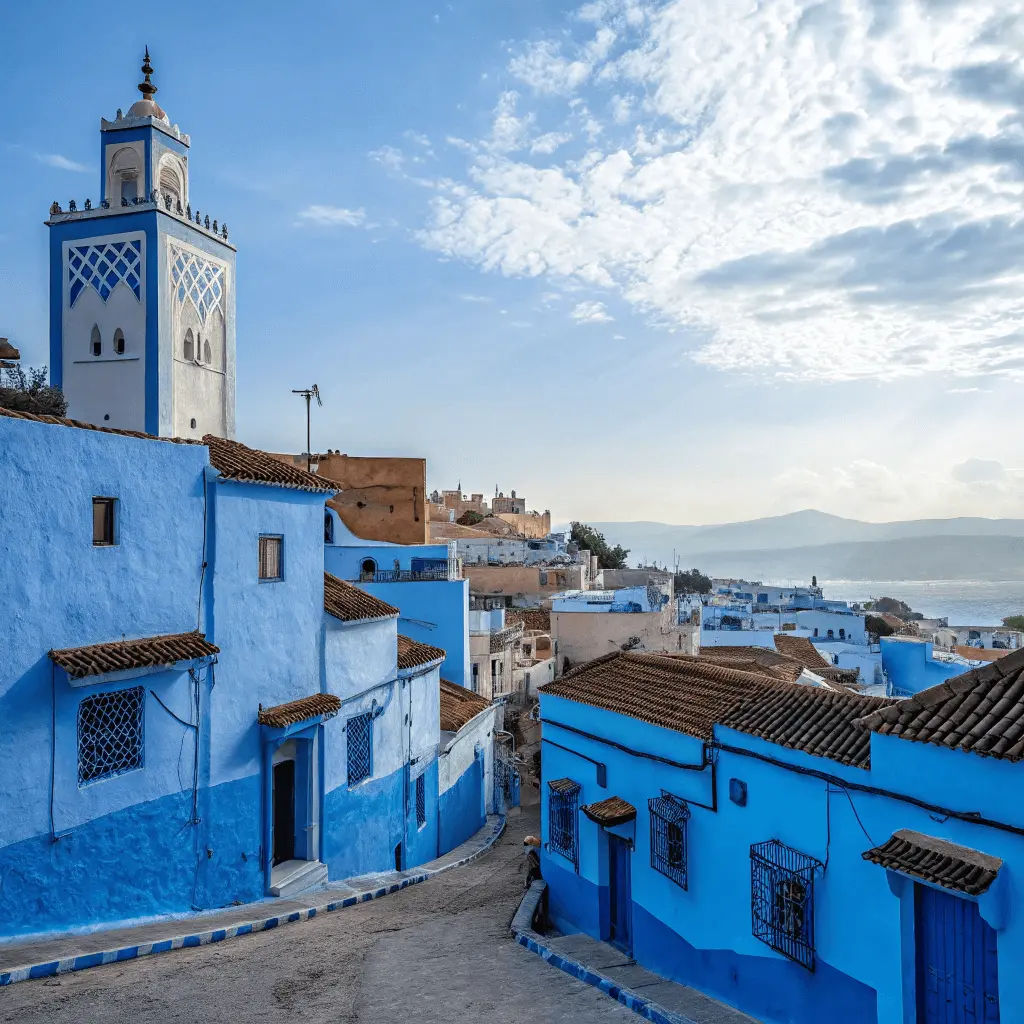
Artisanal Crafts and Shopping Experiences
The artisanal crafts scene in Chefchaouen shows the city’s rich history and cultural mix. Visitors get a real shopping experience as they wander the blue streets. They’ll find traditional handicrafts that highlight the area’s heritage.
Traditional Handicrafts of the Region
Chefchaouen is famous for its traditional crafts like woven textiles, pottery, and woodcarvings. These items are not just souvenirs but also show the talent of local artisans. Look for intricately woven woolen blankets and handmade ceramics that show the region’s cultural influences.
Navigating the Souks and Markets
Exploring the souks and markets in Chefchaouen is exciting. Be prepared to haggle, as it’s common in Moroccan markets. You can find colorful textiles and handmade jewelry in the lively souks.
Ethical Shopping and Supporting Local Artisans
When shopping in Chefchaouen, support local artisans to practice ethical shopping. This way, your money helps the local community and keeps traditional crafts alive. As one local artisan said,
“Shopping with us is not just a transaction; it’s a way of supporting our culture and traditions.”
Culinary Delights of Chefchaouen
Chefchaouen, the blue city in Morocco, is a feast for the eyes and taste buds. Its rich culinary heritage is a blend of traditional Riffian and Moroccan dishes. These dishes show the region’s cultural diversity.
Traditional Riffian and Moroccan Dishes
The city’s food scene is known for hearty dishes like tagine. This slow-cooked stew is named after the earthenware pot it’s cooked in. You’ll also find couscous on Fridays and pastilla, a savory pie filled with meat and spices.
Local Specialties You Must Try
Don’t miss out on local specialties when dining in Chefchaouen. Try Rfissa, a comforting dish made with shredded bread, meat, and lentils. For dessert, indulge in makroud, a date-filled pastry.
Dining Recommendations and Experiences
For a real taste of Chefchaouen, visit local eateries and cafes in the medina. Here’s a quick guide to some dining options:
| Restaurant | Cuisine | Price Range |
| Restaurant Al-Mouna | Moroccan, Riffian | Moderate ($15-$30) |
| Cafe Clock | International, Moroccan | Budget ($10-$20) |
| La Maison Blue | Moroccan, Mediterranean | Upscale ($30-$50) |
Discover the culinary wonders of the blue city of Morocco. Every meal here is a celebration of the region’s rich culture.
Day Trips and Natural Attractions Around the Blue City
Outside Chefchaouen’s blue walls, a world of natural beauty awaits. The blue city Morocco is surrounded by stunning natural spots. It’s perfect for day trips.
Hiking in Talassemtane National Park
Talassemtane National Park is a paradise for hikers. It has trails through the Rif Mountains. The park’s plants, animals, and views are breathtaking.
The Cascades d’Akchour Waterfall
Close to Chefchaouen, the Cascades d’Akchour Waterfall is a sight to see. Hike to the falls for amazing views and cool surroundings.
Visiting Nearby Villages and Landscapes
The villages near Chefchaouen show traditional Moroccan life. Explore these places to see local culture and beautiful views.
| Attraction | Distance from Chefchaouen | Activity |
| Talassemtane National Park | 30 km | Hiking, Wildlife Watching |
| Cascades d’Akchour Waterfall | 25 km | Hiking, Swimming |
| Nearby Villages | Varies | Cultural Exploration, Hiking |
Conclusion: The Timeless Allure of Chefchaouen
Visiting the Blue City Morocco is more than just a visual experience—it’s a deep dive into culture, history, and natural beauty. As you wander through the narrow blue-painted streets, you’ll quickly understand why Chefchaouen is called the blue city of Morocco. From its unique traditions to its stunning mountain setting, every corner of this peaceful town leaves a lasting impression.
Whether you’re drawn by the calming colors or the rich heritage, a trip to the blue city in Morocco offers a refreshing escape from the ordinary. Chefchaouen truly lives up to its name as the blue city Morocco—a magical place where time slows down and beauty surrounds you.
So if you’re planning your next adventure, make sure Morocco blue city is at the top of your list. It’s a destination that captures the heart and inspires the soul.
FAQ
gathered the most common questions travelers ask about the blue city Morocco, also known as Chefchaouen.
1. Why is Chefchaouen called the blue city of Morocco?
Chefchaouen is famously known as the blue city of Morocco because of its iconic blue-painted buildings. The origins are linked to Jewish spiritual symbolism and practical reasons like mosquito deterrence.
2. Where is the blue city in Morocco located?
The blue city in Morocco, Chefchaouen, is nestled in the Rif Mountains in the northwest of the country. It’s easily accessible from cities like Tangier and Fez.
3. What makes the Morocco blue city special?
The Morocco blue city stands out for its serene atmosphere, rich culture, and stunning mountain scenery. It offers a perfect mix of history, architecture, and natural beauty.
4. Is the blue city Morocco worth visiting?
Absolutely. Whether you’re a nature lover, culture seeker, or photographer, the blue city Morocco offers a peaceful escape with unique charm and a warm local community.
5. What can I do in the blue city Morocco?
In the blue city Morocco, you can stroll through the medina, hike in nearby national parks, visit local artisans, and enjoy traditional Moroccan dishes in rooftop cafés.

